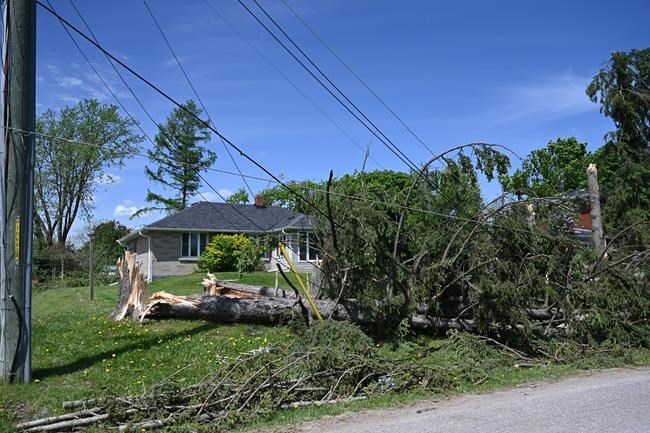From "springuary" for the winter that wouldn't leave to "hotumn" for the fall that never came, Canadians got a whole new vocabulary for wild weather this year.
Here is a list of Canada's top 10 weather stories for 2022 compiled by Environment Canada senior climatologist Dave Phillips:
1. Hurricane Fiona Slams the East Coast — Fiona combined elements of a hurricane and a cyclone to lash the East Coast with lots of everything. A buoy off Cape Breton recorded 30-metre waves. Prince Edward Island's beloved red sand beaches were badly eroded. More than 600,000 homes and businesses lost power and insurance claims topped $700 million.
2. Derecho Rakes Ontario and Quebec — A powerful line of thunderstorms that would normally stay north cruised through southern Ontario and Quebec. Winds of over 100 km/h advanced in a line 100 kilometres long and 1,000 kilometres wide, causing more than $1 billion in damage and killing 11.
3. Soggy Manitoba Spring — After two years of drought, Manitoba got record April rain and snow over eight river basins. More than 1,000 residents of Peguis First Nation were forced to flee their homes amid severe flooding and some farmers couldn't get onto their land until June.
4. Summer Heat Dome — More than 500 maximum daily temperature records fell between July and August in the West. In the East, a summery autumn rewrote 200 heat records. It was dry, too. Victoria had two millimetres of rain — about two per cent of normal and an all-time record.
5. Coastal Wildfires — Dry, hot weather in Newfoundland set the stage for the worst fire season in 60 years. The army was placed on standby and highways were closed, creating supply problems for the communities along their paths. In B.C., a cool, wet spring delayed the fire season's onset but it was well underway by July and stretched into October, forcing the evacuation of thousands.
6. Wintry B.C. Spring — It's supposed to be the dry season, but Nanaimo saw its wettest April since 1892 and in Victoria, 23 of 30 days between May and June were wet. Cold, too — orchardists used helicopters to force down higher, warmer air toward their fruit trees and honeybees were reluctant to leave their hives to get on with pollinating.
7. Prairie Super Storms — A series of July storms hurled hail up and down Alberta and Saskatchewan, complete with heavy rain and winds over 100 km/h. Marble-sized, egg-sized and baseball-sized stones punched through siding, shattered windows and blocked drains. Wind destroyed homes west of Olds, Alta.
8. Rain Swamps Montreal — On Sept. 13, Montreal's downtown core and eastern suburbs got a month's worth of rain in two hours. Streets were closed as overloaded drainage sewers shoved manhole covers aside. Untreated sewage flowed into the St. Lawrence River and hundreds of homes either leaked or flooded.
9. Cold Christmas — Cold air from Siberia settled across much of northern and Western Canada last Christmas. On Dec. 28, Edmontonians awoke to an unbearably low temperature of -42.1 degrees Celsius, breaking a 140-year-old record. Two days earlier, Val Marie, Sask., was the warmest place in the province at -21 C.
10. Eastern Storm Trifecta — A series of early-January storms brought rain, snow and high winds to Atlantic Canada, whiting out roads and burying driveways in up to 80 centimetres of heavy, wet snow. Lights went out in thousands of homes and in all the snow, a ski resort in Nova Scotia had to shut because it had no power and winds were too high.
This report by The Canadian Press was first published Dec. 21, 2022.
The Canadian Press


